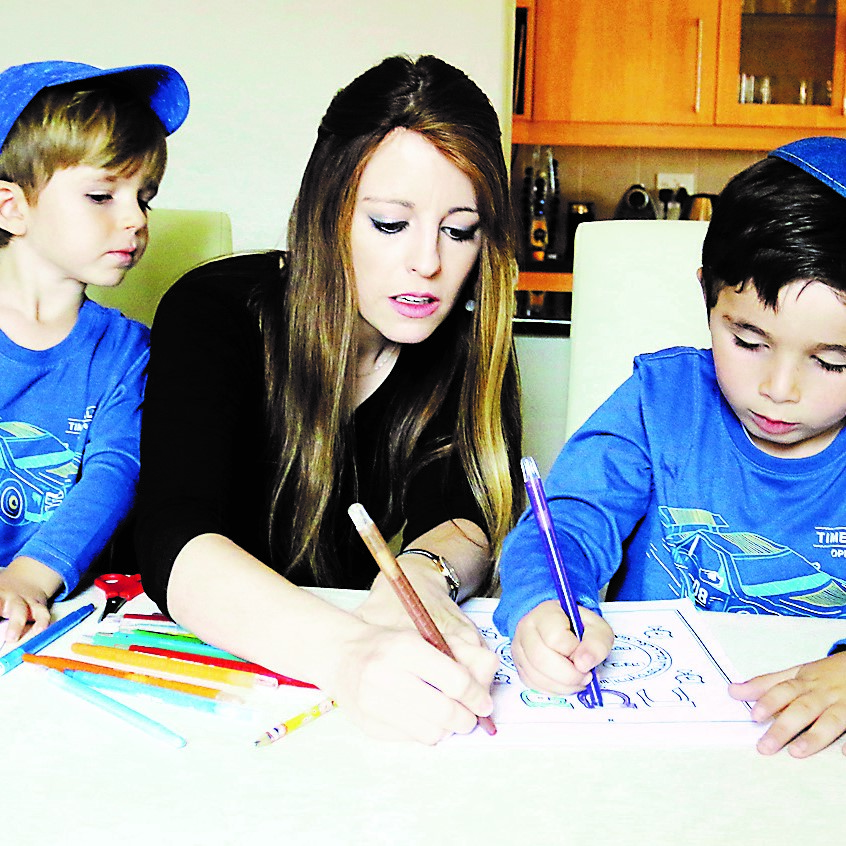click to dowload our latest edition
CLICK HERE TO SUBSCRIBE TO OUR NEWSLETTER


Published
4 years agoon
By
adminGILLIAN KLAWANSKY
Nursery school teacher Michelle Vinokur stresses the importance of routine, especially for younger children. She suggests treating weekdays as school days with the same wake up and bedtime routines and mealtimes. It’s important that they don’t stay in pyjamas, she says.
See what resources you have at home to build a base. “Go through their games and categorise them according to which ones will build up number, language, and sense skills, and which games will simply be fun activities.” Allow your child to choose from the number pile, for example, and then play for 30 minutes. Then do an art activity. Include snack time, and teach your kids that food gives us energy.
Integrating outside play into the morning and afternoon is vital, she says. “Outside time can involve a variety of activities. If kids have siblings, they can do running races, hopping, jumping, skipping, galloping, dribbling a ball, playing with hula hoops, jumping on a trampoline, and so on. Create obstacle courses around your house if outside play isn’t possible.”
After lunch, let them chill and have screen time on the TV or iPad, suggests Vinokur. “Parents also need time out, so two hours of screen time is realistic. Let them know that there’s no more after that. For at least one of the hours, choose something educational for children to watch. The iPad also has many educational apps.” TV won’t become a problem, she says, if you build it into their day for a set period that’s clearly explained to them. “Children don’t enjoy using TV and technology constantly, it’s only because their parents don’t give them the opportunity to do something else. Make sure you provide that opportunity.” Outside play after TV is advisable.
Afternoon activities could include science experiments, baking, or construction. Puzzles are important as is integrating sensory play. Let them get their hands dirty with mud, shaving cream, or finger paint. Exposing them to that kind of fun is important as they gain important skills, she says. “Try not to restrict them too much.” Later, during downtime, read a book and play listening games to develop their auditory skills. “You can play ‘I spy’, memory games, or simply make up stories. Make time for them to use their imagination.”
Similar principles apply to primary school children, says Vinokur. Encourage them to start homework in the morning and finish in the afternoon if they need to. “If they don’t get that morning slot, the day will drag, and they’ll land up resenting homework,” she says. Outside time and fun activities are also important for older kids.
Now in her fourth decade of teaching, educational specialist Kim Goldblum runs a playschool for babies and kids up to the age of four. She says that focusing on our kids’ emotional needs is what’s most important at the moment “Guard against putting pressure on them,” she says. “When this has passed, the emotional well-being of your child is what will count.” That means we need to stay calm, and not put too much pressure on ourselves either.
Goldblum endorses child-led education within a daily framework. “While you do need routine and regular mealtimes, leave the kids alone until they need you to intervene,” she says. “If they’re very happy doing what they’re doing, let them be. If you’re unhappy with what your child is doing, intervene and provide an alternative. Think of the letter “b” and you’ll have most of what your children need – a book, a ball, blocks, a bike, and building. Then add an “a” and “c” for arts and crafts.” Exercise and nutrition is also vital.
“When we get through this, we don’t want our children to get to a point where we entertain them every single minute of the day,” she says. “They need to draw on their own creativity. It doesn’t matter if your child isn’t cutting on the line or colouring in properly, they’ll catch up. What matters is that we got through the day, had fun, got dirty, and that we’re healthy and safe.”
Involve older kids and teens in co-creating their own schedules, advises a group of local ed-tech specialists. “Use orange posts for required learning [maths, reading, science] and yellow posts for fun like TV and iPad. The parent picks two, and the kid picks two. Exercise, some mindfulness, art, drama, and music can all get time slots too..
This team also suggests forming a designated learning space. “Organise learning materials and designate a common area for learning. Ideally, the space has a strong wireless connection, can be blocked from noise at times, and is located where family members can participate in your child’s learning.”
Look for online courses that interest older kids. “Sites such as www.khanacademy.org/ offer a variety of short courses that can appeal to students’ interests and help them develop skills.” Ed-tech specialist Michelle Lissoos and her team also suggest using gaming as an opportunity to teach coding. “Apps such as Swift Playgrounds, Tynker, and Hopscotch teach children to code using a game-like platform.”
Scheduling virtual playdates or get togethers for younger and older kids can assist them in maintaining a human connection.
Self-regulation is important, says Jorgensen. “Find positive ways for children and teenagers to regulate their emotions, and express how they’re feeling.” Ultimately, no one expects you to be perfect. “The most important things parents can do right now is to be flexible, have an open mind as to how your child might be feeling, and implement stress-management techniques for the whole family.”
